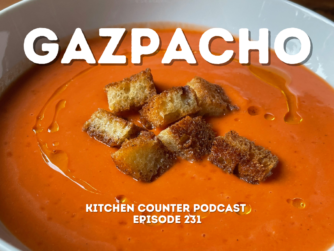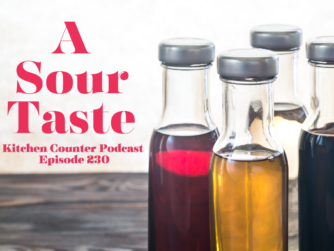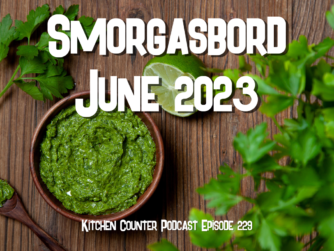Download the episode MP3 (right click to save)
Spice is the Variety of Life
“I Don’t Know What to Do With Spices!”
This is a comment I hear often when talk about cooking, especially with spices and herbs. I talk a bit about this in the episode, but the main points I want to get across are these:
1) If you are cooking from a recipe, then trust the recipe’s recommendation on spices and you’ll do fine.
2) When experimenting with spices, don’t be intimidated–it’s tough to ruin a dish unless you put so much spice in it becomes inedible. Therefore when you use spices “freestyle” always start with small quantities and work up as you taste the dish. It’s easy to add spice to a dish, but impossible to remove!
3) Finally, taste your spices and start learning what you like, what those spices remind you of, ans where you might like to try them. You’ll start to build your palette and preferences for spices, then your spice cabinet can grow accordingly!
For a comprehensive reference on spices and herbs, check out “The Spice and Herb Bible” by Ian Hemphill. It’s an exhaustive look at practically every spice and herb you’ll probably come across (it’s a beautiful book as well). The Spice and Herb Bible
Spice You Might Want to Have On-Hand
Here’s a short list of spices you may want to have in your cabinet to give you a good variety. You’ll use these quite a lot in many recipes, but of course you may find this list lacking depending on your particular taste and preferred cuisines.
Salt
Black Pepper
Garlic Powder
Onion Powder
Chile Powder
Cumin
Dried Thyme
Dried Parsley
Bay Leaves
Cayenne Powder
Cinnamon
Nutmeg
Additional spices I like to use frequently:
Dried Basil
Smoked Paprika
Ground Mustard
Cloves
Star Anise
Yellow Curry Powder Blend
You can most of these spices in your grocery store. Harder to find spices may be found at The Spice House or other online spice merchants.
Spice Madam Review
I was able to try out the Spice Madam service this month. Listen to my full thoughts in the episode, but I will say I was quite impressed. The quality of spices included was fantastic, and the recipes were easy to put together and they were very tasty. This would be a great service for people that want to broaden their horizons when it comes to spices and cuisines from around the world. If you can swing the subscription fee ($20/month at the time I posted this) then I highly recommend giving it a try. Skip going to the movies one time or pass on a few lattes and you practically pay for the service. You can read more about them here:
Web: http://spicemadam.com/
Instagram: http://instagram.com/spicemadam
Twitter: https://twitter.com/spicemadam
I will also say I was turned on to what my be my new favorite spice from the Spice Madams…Sumac! Here are a couple of pics of my end results from the spice madam box.
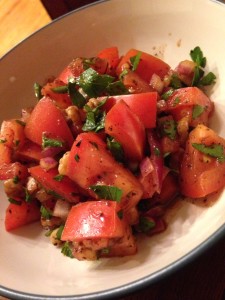
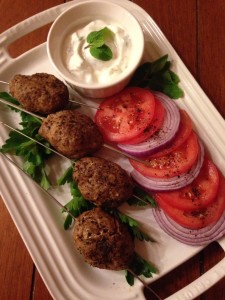
Connect with The Kitchen Counter Podcast!
Leave me voice mail feedback at: 971-208-5493
Facebook: https://www.facebook.com/kitchencounterpodcast
Twitter: @TKCpodcast
Email: feedback@kitchencounterpodcast.com
If you liked what you heard, please consider subscribing in iTunes. You can also help out the show by leaving a positive review in the iTunes store (you know you want to)!

